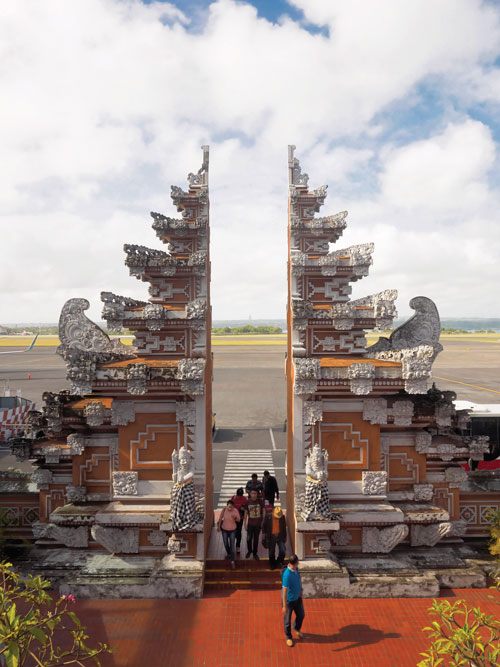Lofty arrival targets have been set, but the country’s aviation infrastructure is sorely lagging behind.
 The Indonesian government has set a high target of 20 million arrivals by 2019, but the trade feels that the airport infrastructure and seat capacity are not yet on par to meet the country’s tourism ambitions.
The Indonesian government has set a high target of 20 million arrivals by 2019, but the trade feels that the airport infrastructure and seat capacity are not yet on par to meet the country’s tourism ambitions.
Bali’s Ngurah Rai International Airport, despite its terminal expansion, is still not big enough to support the arrival influx. In Yogyakarta, a new airport is needed as the existing Adisucipto International Airport has way exceeded capacity. Even Surabaya’s Juanda International Airport, considered the gateway to eastern Indonesia, needs to be expanded to accommodate arrival growths.
Gufron, director of Alpha Hotel Management and general manager of Suarti Boutique Village Ubud, said: “The Ngurah Rai airport needs an additional runway to enable more flights to come in.”
He added: “The plan to develop a new airport in north Bali needs to materialise soon. This will add to movement capacity and trigger the development of tourist infrastructure in the area. (That way), tourists will spread out more around the island.”
Besides airport infrastructure, what’s needed is also more direct connectivity from longhaul markets. Bagus Sudibya, managing director of Nusa Dua Tours and Travel in Bali, commented: “The government has spent a lot of money on the branding and promotion (of Indonesia). What they need to do next is boost direct flights into the country.
“For example, we need more direct services from Europe to grow European arrivals into the country. (It is not possible) with the current limited seat capacity,” he stated, as Garuda Indonesia flies to only Amsterdam and London in Europe.
Bagus also underscored the importance of network development in Indonesia, which will enhance travel within the archipelagic country.
Airport developments have been a top priority under the Joko Widodo administration, said Indonesia minister of tourism Arief Yahya, who cited examples such as the expansion of both airports in Labuan Bajo (the gateway to Komodo) and Bandung, the Husein Sastranegara International Airport.
“Air connectivity is another priority for us this year, as 75 per cent of international arrivals to the country is by air,” Arief remarked.
There are currently 19.5 million seats, offered by both Indonesian and international airlines, available each year. This was sufficient to fulfil the target of 12 million arrivals in 2016.
“To meet the 2019 target of 20 million arrivals, Indonesia needs to have some 30 million seats a year, or 10.5 million additional seats in the next three years,” Arief said, acknowledging that an increase in seat capacity is crucial to the development.
This year, the Indonesian Ministry of Tourism is targeting an additional four million seats. They have kicked that off with an MoU with the airport authorities – Angkasa Pura I, Angkasa Pura II and AirNav Indonesia – to open more routes, increase frequencies and launch new services from new markets.
Other ongoing efforts include giving incentives on airport charges, and the application for priority slots in a number of international gateways in Indonesia.
This article was first published in TTG Asia March 2017 issue. To read more, please view our digital edition or click here to subscribe.




















